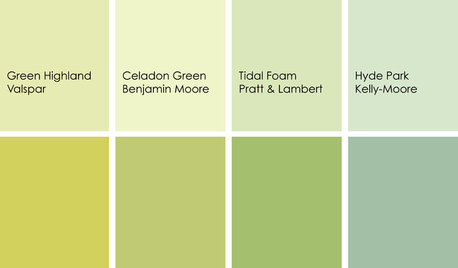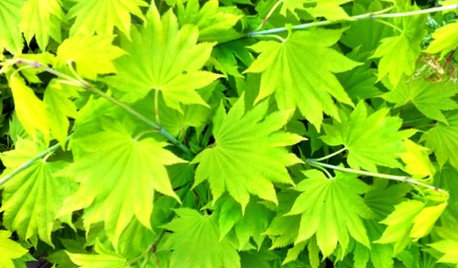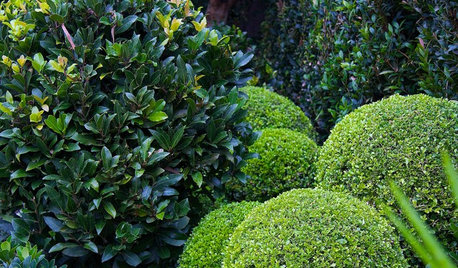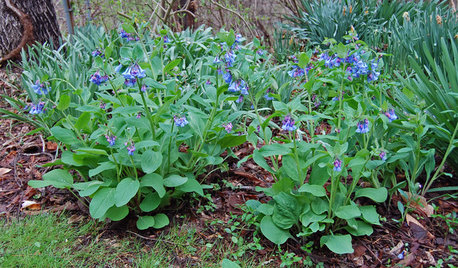ReaLemon/Lime acidity
kayskats
16 years ago
Related Stories

HOUSEKEEPINGHow to Clean Marble Countertops and Tile
Acidic solutions can damage your marble surfaces. Here’s how to keep marble looking clean and amazing
Full Story
COLORColor of the Week: 10 Tangy Ways with Citrus Green
Add some zest to your home with a little — or a lot of — lively lime
Full Story
DINING ROOMSColor Feast: When to Use Green in the Dining Room
Squeeze a little lime into the space where you dine — green walls, chairs or accessories can be delicious if you do them right
Full Story
LANDSCAPE DESIGNMoss: Nature’s Carpet for the Garden
Learn how to grow and use this ancient and mysterious natural wonder for delightful texture in the landscape
Full Story
GARDENING GUIDESGreat Garden Combo: 6 Beautiful Plants for a Shady, Wet Site
Transform a shade garden with moisture-loving golden grasses, textural leaves and a sprinkling of flowers
Full Story
LIME FOLIAGE16 Stunners From an English Garden Center
Get the abundant, overflowing look of an English garden with these hardworking spring-blooming plants and flowers
Full Story
LANDSCAPE DESIGNGreen-Only Gardens Draw the Eye and Soothe the Spirit
Use plant and foliage variety to create a monochromatic landscape as visually pleasing as it is calming
Full Story
GARDENING GUIDESGreat Design Plant: Mertensia Virginica
Virginia bluebells provides relief from winter with a big display of color
Full Story
GARDENING GUIDESGrow a Beautiful Garden in Alkaline Soil
Got alkaline soil? Learn how to manage it and the many beautiful plants that will thrive in this ‘sweet’ soil
Full Story
HOUSEKEEPINGTackle Big Messes Better With a Sparkling-Clean Dishwasher
You might think it’s self-cleaning, but your dishwasher needs regular upkeep to keep it working hard for you
Full StoryMore Discussions






ksrogers
jenniesue
Related Professionals
Canton Landscape Architects & Landscape Designers · Middle River Landscape Architects & Landscape Designers · Sand Springs Landscape Architects & Landscape Designers · Farmington Landscape Contractors · San Rafael Landscape Contractors · Secaucus Landscape Contractors · Thornton Landscape Contractors · Weymouth Landscape Contractors · Naples Roofing & Gutters · Chicago Ridge Roofing & Gutters · La Jolla Roofing & Gutters · Colonia Roofing & Gutters · Des Plaines Driveway Installation & Maintenance · Middle Island Driveway Installation & Maintenance · San Jose Driveway Installation & Maintenancereadinglady
kayskatsOriginal Author
ksrogers
petrowizard
gardengalrn
readinglady
kayskatsOriginal Author
ksrogers
kayskatsOriginal Author
Linda_Lou
kayskatsOriginal Author
triple_b
ksrogers
kayskatsOriginal Author
triple_b